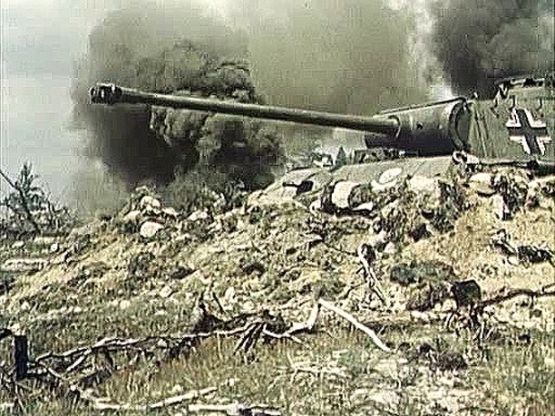|
World War Two Film Clips  Written four months after the allied invasion of Europe, and seven months to go until the war's end, YANK MAGAZINE published this account of the Canadian march through France and their heroic stand at the Falaise Gap.
Click here to read about the Canadian POWs who collaborated with the Nazis.
Read about the French-Canadians who resisted the draft... Published four months after the World War II Japanese surrender, the Yank Magazine editors saw fit to publish the happily obsolete plans for the invasion of Japan: operations Coronet and Olympic.
Click here to read articles about post-war Japan. "Whatever became of the conscientious objectors?"
"Some of the men who registered as 'conchies' with their local selective service boards have been deferred because they are working in essential jobs. About 6,890 conchies have been interned and assigned to Civilian Public Service camps in the States. A handful, just 47, live and work in camps on Puerto Rico and the Virgin Islands, the only places outside the continental limits of the States where they may serve. By act of Congress, conscientious objectors may not be sent to foreign lands, but Puerto Rico and the Virgin Islands, although overseas, are territories of the U.S."
Click here to read about the British conscientious objectors of World War I.
We have an article that pertains to the Korean War draft-dodgers but it also explains the popular methods used by the W.W. II draft-evaders, as well.
To read an article about American draft dodgers of W.W. II, click here.
This small notice from a post D-Day issue of YANK announced the capture of a German woman sniper named Myra. It is interesting to note that she was captured in civilian clothing; a male sharp-shooter would have probably been shot immediately. The popular reasoning on all sides during war stems from the fact that snipers do not take prisoners themselves, therefore why should they be afforded the privilege?
If you would like to read an article about women soldiers in W.W. I, click here. |
MORE ARTICLES >>> PAGE: * 1 * 2 * 3 * 4 * 5 * 6 * 7 * 8 * 9 * 10 * 11 * 12 * 13 * 14 * 15 * 16 * 17 * 18 * 19 * 20 * 21 * 22 * 23 * > NEXT |
|